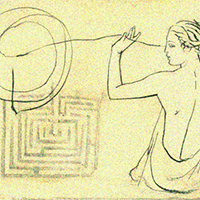 Smart Citations
Smart CitationsSee how this article has been cited at scite.ai
scite shows how a scientific paper has been cited by providing the context of the citation, a classification describing whether it supports, mentions, or contrasts the cited claim, and a label indicating in which section the citation was made.
The Arianna thread: the matching of S-100 family with the RyR’s muscle receptor
The functional state of RyR depends on the intracellular calcium concentration and on the oxidation state of its protein components in some particular sites and of some sentinel amino acids. In addition to the regulation of the RyR channel by exogenous substances (caffeine, ryanodine), ions environmental situations (oxidative state), other components, such as some endogenous proteins present in the sarcoplasm and/or in muscle membranes that are able to determine changes in Ca2+ channel activity. Among these, calmodulin and S-100A could determine modifications in the status of RyR channel in the skeletal muscle. The currently available data can be justified the use of a simplified S-100/CaM and RyR interaction model for the regulation of Ca2+ release in skeletal muscle. Under resting conditions, the CaM/S100A1 binding domain on RyR1 is predominantly dependent on S100A1. Vice versa when the intracellular Ca2+ concentration becomes high as well as during repetitive (tetanus) stimulation, the Ca-CaM bond becomes dominant, shifting S100A1 from RyR1 and promoting channel inactivation. This may be one of the mechanism of muscle fatigue.
Downloads
How to Cite
PAGEPress has chosen to apply the Creative Commons Attribution NonCommercial 4.0 International License (CC BY-NC 4.0) to all manuscripts to be published.

 https://doi.org/10.4081/ejtm.2019.8839
https://doi.org/10.4081/ejtm.2019.8839





